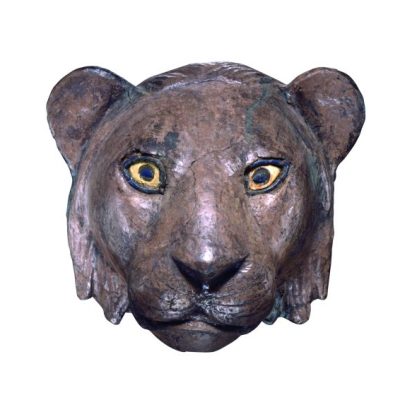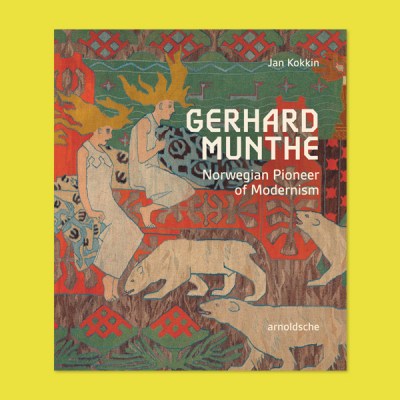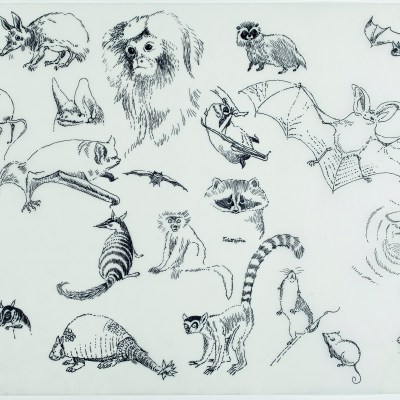‘The role of the national galleries in Sweden and in other countries is twofold: first of all to tell a story about the history of art history – and that means focusing on foreign art, if you like – and, secondly, to collect art that is “national”, and to put these two stories together.’ Susanna Pettersson, the new director general of the Nationalmuseum in Sweden, is a scholar of the history of museums and the history of collections, and our conversation has inevitably turned toward her specialism, but her general observation makes itself felt at every turn.
The Nationalmuseum first opened in 1866, but dates its origins to an earlier decision to found a public museum drawing on the Swedish royal collection. In 1792, Gustav III was assassinated by a disgruntled military officer and it was decided that a museum should be dedicated to the memory of the art-loving monarch. If the circumstances were not quite revolutionary – this was the same year in which the entire contents of the Louvre were nationalised – they were certainly reformist. While the inventory of the late king’s personal art collection – much of which he bought on his Grand Tour in 1783–84 – was still being made, everything he had bought with state funds was declared state property. These artworks formed the basis of the Royal Museum when, in 1794, it opened in a wing of the royal palace in Stockholm and was soon joined by a transfer of works from other royal residences. It is this history that allows the current institution to regard itself as one of the oldest public museums in Europe and a product of the Enlightenment. In the middle of the next century the Swedish parliament voted to fund the construction of a new home for what was to be a national museum on the Blasieholmen Peninsula, just opposite the royal palace.
The constituent parts of the Nationalmuseum have kept changing since then and although some plans have come to nothing (in 1845 the intention was that it also house Gustav III’s antiquities collection, the royal coin cabinet, armory and library), the consistent elements have been painting (including the national portrait collection) and the decorative arts. By the beginning of this century it was clear that the building was ready for a complete overhaul that would remove a century of ad hoc alterations and unnecessary accretions, and modernise all the services. Now that the museum has reopened after a five-year renovation costing SEK 1.2 billion, visitors who knew it before will notice that there are many, many more objects on display, natural light can now reach the galleries, and the walls have been painted in strong, bright colours. The most significant change on the ground floor is that the level of the two courtyards has been raised and that of the foyer connecting them lowered so that the spaces flow into each other. Light now floods into these courtyards, one of which is full of 19th-century sculpture ranging from the monumental figures of the gods Odin, Thor and Balder to portrait busts of men (and one woman) who shaped the modern nation.
Psyche, Carried by Cupids (1590–92), Adriaen de Vries. Photo: Linn Ahlgren/Nationalmuseum
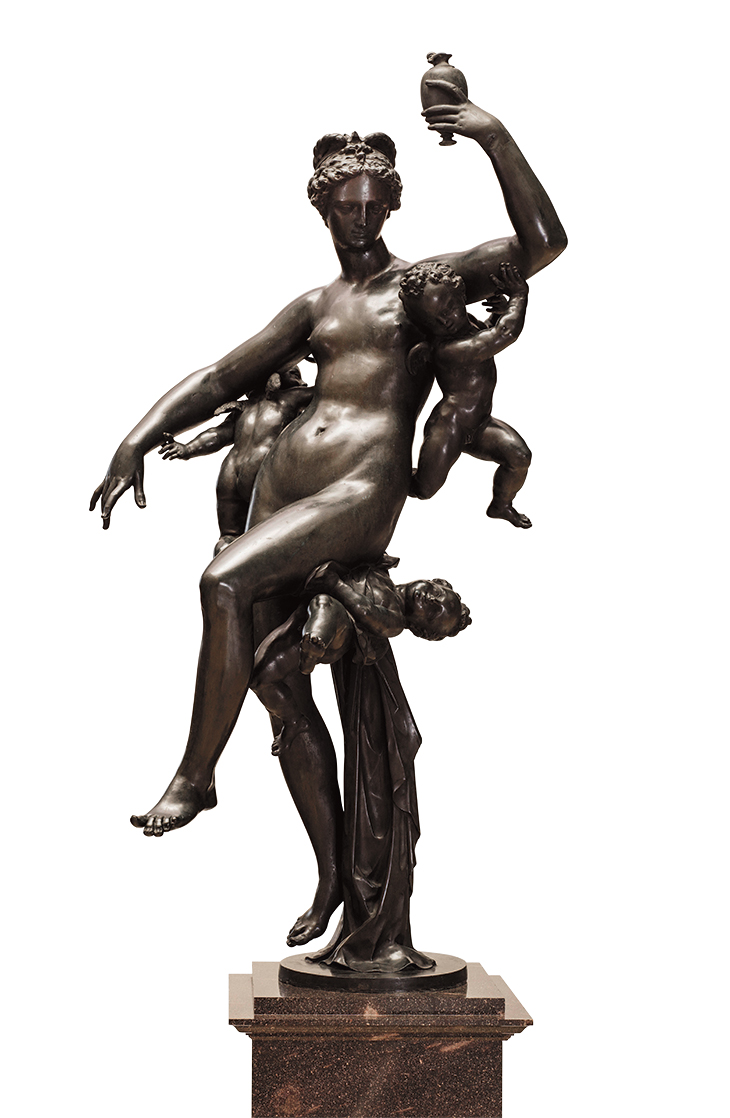
But it’s upstairs where the most significant changes can be found. The museum has not just tripled the number of objects in the galleries (from 1,700 to more than 5,000); it has completely rethought its modes of display. On my visit to the Nationalmuseum just a few weeks before it reopens, Pettersson, who took up her post on 1 August this year, is quick to say, ‘I haven’t been involved in the collection displays at all. My colleagues have done all of that, and they have done it remarkably well.’ Change in this area has been led by the museum’s director of collections and research Magnus Olausson, who clearly relishes the new chronological arrangement, which is punctuated by cabinet-like groupings of paintings and decorative arts objects where this has seemed appropriate. The new approach makes an immediate impression in the first gallery, now painted primrose yellow and home to works including paintings by Lucas Cranach the Elder and bronzes by Giambologna (including an equestrian statue of Rudolf II) and Adriaen de Vries (Psyche, Carried by Cupids [1590–92]), as well as an enormous tapestry canopy. Many of the works in this room came to Sweden in the country’s more expansionist and aggressive past. In 1632, Swedish troops occupying Munich looted its famous Kunstkammer, making off with works such as Cranach’s The Ill-Matched Couple (1532); in 1648 the Swedish army sacked Prague and seized hundreds of paintings from the collections built up by Rudolf II. When Queen Christina abdicated her throne and left Sweden for Italy, her preference for Italian Old Masters over the Northern European painters favoured by the Holy Roman Emperor meant that she arranged for only a fraction of the 470 paintings from the ‘Prague Booty’ to leave, too. (Although the rest stayed in Sweden, only 30 or so of these have survived.) Even the canopy is a prize of war – it belonged to Frederick II of Denmark and was looted from Kronborg Castle in the 1640s.
The Ill-matched Couple (1532), Lucas Cranach the Elder. Photo: Ana Danielsson

Pettersson says, ‘If you think of the bigger perspective, the collections that were the most important in Europe, starting in the Renaissance, traces of them can be seen here.’ Olausson later amplifies the point: ‘All the new displays are integrated ones and the intention is not to create a fruit salad, or a peach melba, but to see that we have the option to show the different arts together, to create an important historical context. They are not just highlights, but they each have their own history and they are also connected with each other.’
The museum is more than a piecing together of the fragments of princely collections, some of which are also a reminder of Sweden’s one-time role as a major European power. It also has its own story to tell about the rise of the art market and of private collectors – and the circuitous routes by which privately owned works have reached museums. The most important of these private collectors, as far as the Nationalmuseum is concerned, is Carl Gustaf Tessin, the Swedish diplomat, writer and connoisseur who acted as an unofficial ambassador to the court of Versailles between 1739 and 1742. Tessin bought directly from painters such as Chardin and Oudry, as well as through dealers such as Gersaint. The works he commissioned include Boucher’s The Triumph of Venus (1740), a portrait of himself by Jacques-André-Joseph Aved, which depicts him holding a print after Raphael, and another by Oudry of his pet dachshund, Pehr. All three paintings were exhibited at the Paris Salon of 1740. Tessin’s desire to be regarded as one of the pre-eminent collectors of his time – reflected in his pose for Aved – also led him to buy in bulk works that had belonged to a great collector of the generation just before him. When Old Master drawings in the collection of the banker Pierre Crozat came up for auction in 1741 (catalogued by Pierre-Jean Mariette), Tessin bought more than 2,000 of them, including works by Van Dyck, Rubens, Goltzius, and a whole portfolio of Rembrandt drawings. His art-buying habit led him to the brink of personal bankruptcy, which forced him to sell much of his collection, some of which was bought by members of the Swedish royal family and found its way to the Nationalmuseum.
The Dachshound Pehr with Dead Game and a Rifle (1740), Jean-Baptiste Oudry. Photo: Cecilia Heisser/Nationalmuseum

There are also more idiosyncratic, unexpected strands in the collection. Thanks to two major donations of portrait miniatures, one in the late 19th century and another in the 1920s, the Nationalmuseum has the largest collection of such objects in the world and is particularly strong in English examples. Of Carl Fredrik Dahlgren, who made the earlier gift of 4,400 works, Olausson says, ‘He was really manic; he collected as many as possible,’ before characterising Hjalmar Wicander, who donated a mere 600 examples as ‘more like the J.P. Morgan of miniatures’. A highlight of the latter’s bequest includes the tiny copy of Van Dyck’s portrait of the Digby family, by Peter Olivier, which once belonged to Horace Walpole. Wicander also donated ‘a great amount of money’ that allows the Nationalmuseum to buy every year some 25 or 30 more miniatures.
The Nationalmuseum receives an annual government grant – in 2016 this was SEK 164 million (nearly €16m) – and since the reopening in October the permanent collection is free for visitors, who will only be charged for events and special exhibitions. The museum has no dedicated annual budget for acquisitions. But in the five years since it has been closed it has embarked on what Olausson describes as a ‘very very ambitious programme’ of canny purchases: some through the returns on the investments of foundations, which then specify the kind of art the museum can purchase; the rest through private donations. The opportunity to refurbish and rearrange all the galleries was also a chance, he explains, to consider the gaps in the permanent collection and how to fill them. The museum’s recent approach to acquisitions is well represented by its purchase of a set of four remarkably well preserved late 17th-century tapestries that were designed by Jean-Baptiste Monnoyer, manufactured at Beauvais and purchased by a Swedish nobleman for his residence in Stockholm. The acquisition of a work by the German Romantic painter Ernst Fries of the waterfalls at Tivoli (1826) highlights the museum’s commitment to deepening its holdings of 19th-century paintings in preparation for a special exhibition it is putting on next year.
The Waterfalls at Tivoli with the Ponte Lupo, Temple of Vesta, and Temple of Sibyl (1826), Ernst Fries.
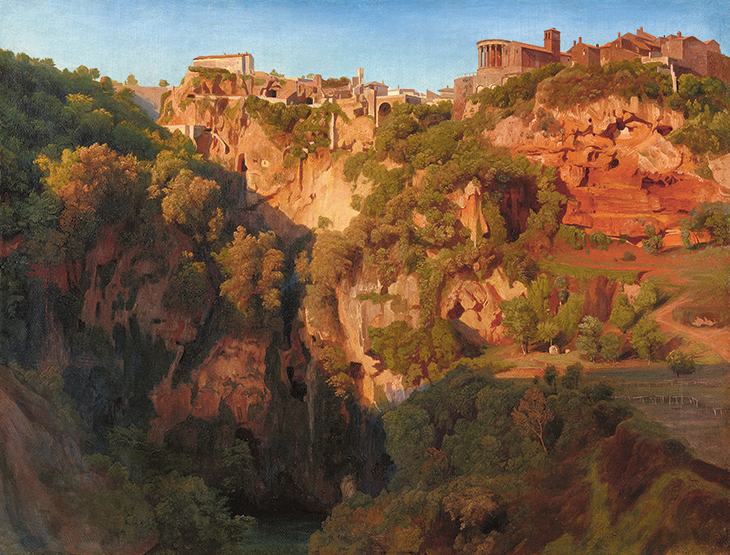
The choice to present John Singer Sargent as the first temporary show after the reopening becomes much more interesting (and perhaps less surprising) if you consider that, as Per Hedström, the director of exhibitions, explains, there has never been a monographic show of Sargent’s work in Scandinavia. This claim seems more likely when he demonstrates how, to orientate visitors unfamiliar with Sargent, the exhibition opens with the pairing of Anders Zorn’s 1909 portrait of Gustav V and Sargent’s portrait of Lord Ribblesdale of seven years before. You can compare the similarity of the subjects’ standing poses and even, Hedström points out, of their shiny shoes. The show isn’t trying to claim a close personal or artistic connection between the two artists, although they certainly knew each other, but to pique the interest of the museum’s audiences by making deft comparisons between the cosmopolitan American painter and a near contemporary who is sometimes (but only outside Scandinavia) called the ‘Swedish Sargent’.
Midsummer Dance (1897), Anders Zorn. Photo: Linn Ahlgren/Nationalmuseum
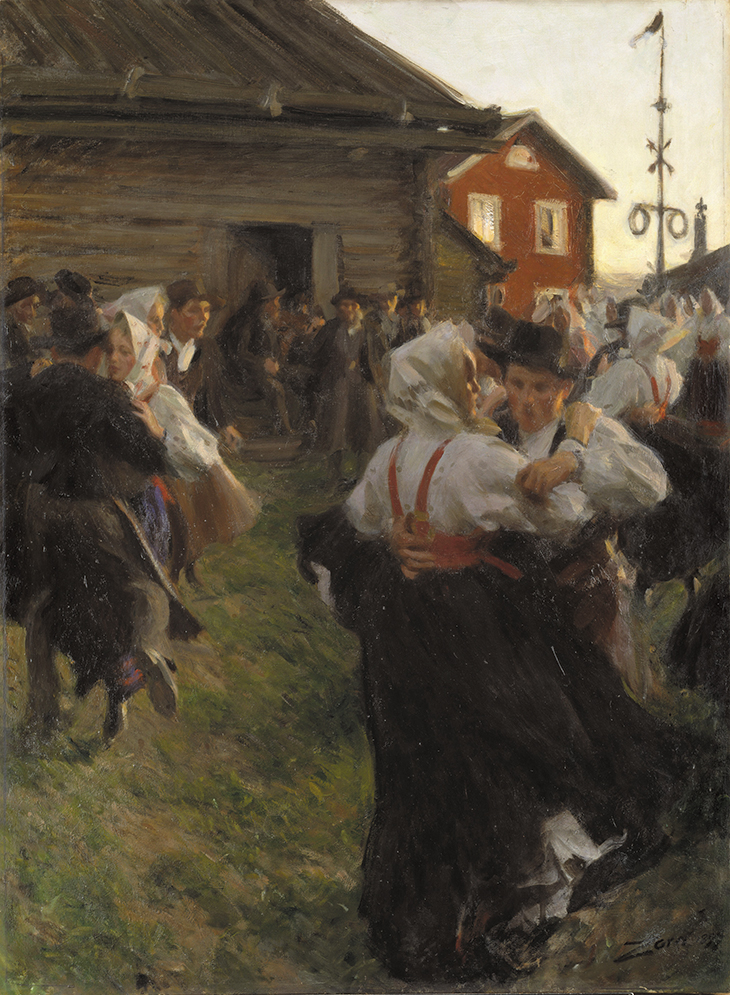
The interplay between what is national and what is international, what is particular and what is universal, what is familiar and what seems new, can be seen – admittedly only if you’re looking for it – in every aspect of the Nationalmuseum’s collection. It’s a tension that has been inscribed into the building. Olausson tells me that care was taken to use Swedish marble in the museum’s great entrance hall, rather than marble from Carrara; inset into the staircase is a copy of part of the Parthenon frieze, made in London in the 1860s. And at one end of the great hall is a painting by Carl Larsson of Gustav I (‘the father of the nation’) entering Stockholm in 1523, with a series of allegories (also by Larsson) showing the support of Sweden’s rulers for the liberal arts.
Susanna Pettersson seems well placed to turn the tensions inherent in a ‘national’ project into purely creative ones. She comes to the museum from Helsinki, where she was the director of the Ateneum Art Museum (the Finnish gallery of national art), and her roles before that include being director of the Alvar Aalto Museum and running the Finnish Institute in London. As she explains, at this important moment in the Nationalmuseum’s history, when it comes to taking up the directorship of a museum, ‘it’s not so difficult to move on to a moving train’.
It is intriguing – not in relation to Pettersson, of course, but when thinking about the museum – that when the calls to turn the royal museum of 1794 into a ‘national museum’ began in around 1810, they came just after Sweden had lost all of Finland to Russia. But if there is a hint of irony in a high-flier in Finland being put in charge of Sweden’s art-historical heritage, Pettersson is unlikely to acknowledge it in our encounter. She is, however, full of plans for the future. The museum is currently in charge of 14 different sites around the country (castles, royal residences, etc.) where the collection goes on display, but the next step is to develop a national touring exhibitions programme, in tandem with an international touring exhibitions programme.
During its five-year closure the museum has been able to send significant sections of its permanent collection abroad. Perhaps most notably, ‘Treasures from the Nationalmuseum of Sweden: The Collections of Count Tessin’ was at the Morgan Library & Museum, New York, in spring 2017 – the first and last time since the 1740s, Olausson says, that The Triumph of Venus has been outside Sweden: ‘We won’t lend it any more so that was a great occasion.’ Carl Larsson and Anders Zorn are less fragile prospects and both painters have had well received – and in the case of Zorn, revelatory – monographic shows at the Petit Palais in Paris in recent years.
The Triumph of Venus (1740), François Boucher. Photo: Cecilia Heisser/Nationalmuseum

Pettersson is adamant that museums should be engaged in research, stressing that ‘national galleries have the biggest responsibility in the museum sector to fund research. If they don’t do that, no one does.’ And by funding research she means encouraging younger academics to work with real artefacts and to present their research in a museum context, which also means forging stronger links with universities, both at home and internationally. She singles out the Nationalmuseum’s holdings of Dutch and Flemish Old Master drawings and its portrait miniatures as perfect study collections, but is also looking forward to the results of a project with the other Nordic national galleries about the role and work of women sculptors in the 19th and early 20th centuries. International collaborations seem particularly important to Pettersson, who says firmly: ‘Art has always been international. Art doesn’t recognise any boundaries, and that is also one of the messages of national galleries, Europe-wide.’
From the November 2018 issue of Apollo. Preview and subscribe here.
